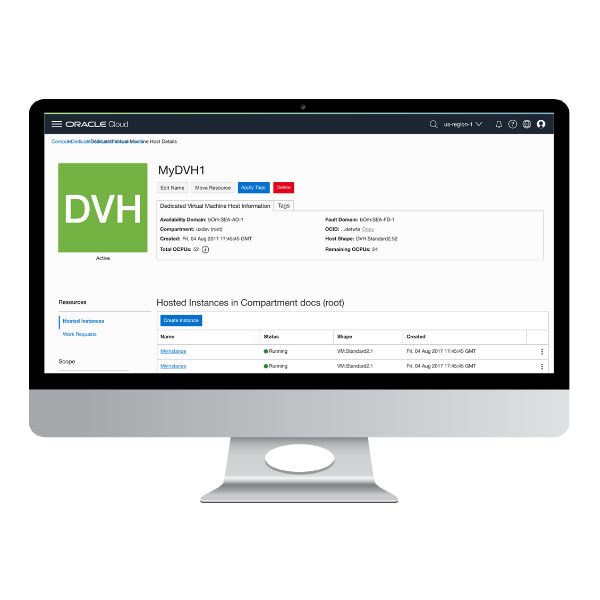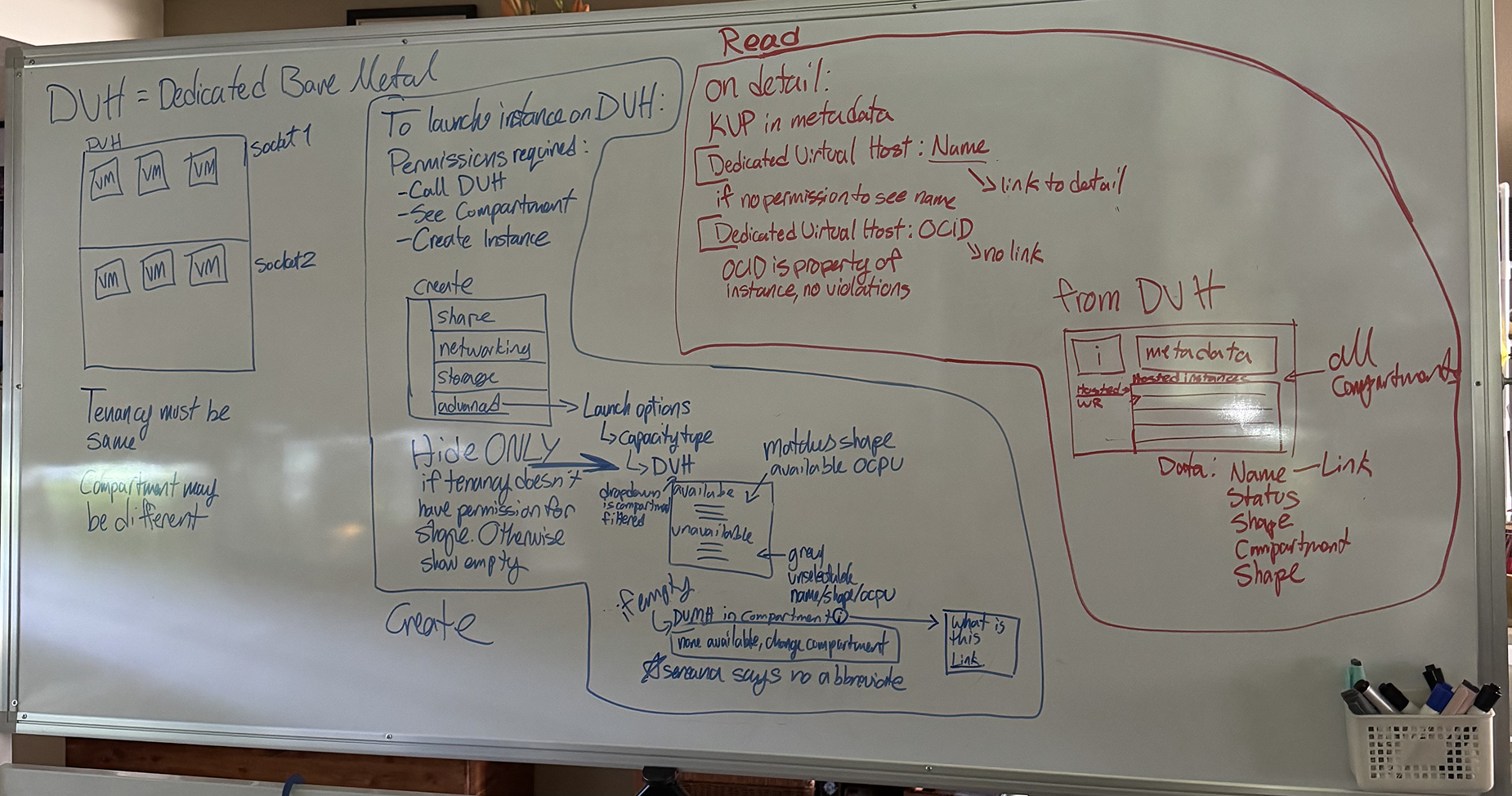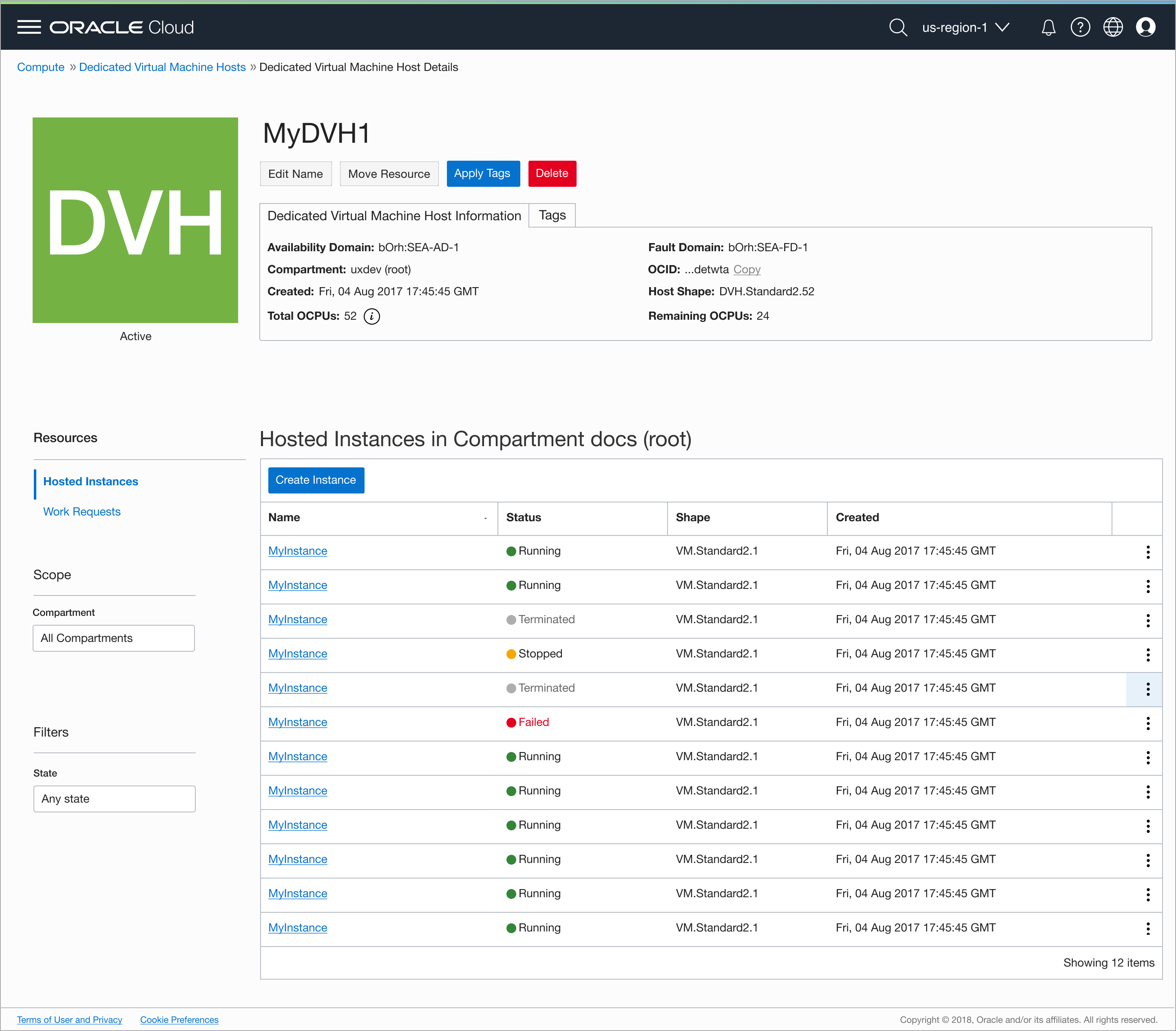
The project commenced after months of backend development, meaning the hardware, networking, and shape catalog were already established and locked. My initial approach involved comprehensive discovery, which included running whiteboarding sessions with engineers to thoroughly understand the technical boundaries and collaborating with the Product Manager to clarify all compliance requirements. This deep dive into existing constraints was crucial for designing a solution that was technically feasible and legally compliant.
A key design innovation was simplifying complex technical data for the user. Instead of displaying the total number of OCPUs (which included those reserved for virtual machine management), the design specifically highlighted only the “usable OCPUs” and available memory. This approach significantly reduced cognitive load and helped users make informed decisions quickly, without getting bogged down in what couldn’t be used. This was achieved through tight collaboration with backend engineers to ensure the UI could accurately surface these actionable insights.
Furthermore, the design ensured DVH was integrated into the existing Compute catalog using established OCI patterns, which minimized the learning curve for current users. I also added expandable shape compatibility tables, allowing users to confirm workload fit before provisioning. For features that were inherently unsupported, such as instance pools, rather than presenting an abrupt error, the UI was designed to gently guide the user away from incompatible options, helping them stay on task without friction.

The launch of Dedicated Virtual Machine Hosts proved highly successful, contributing to significant business and operational benefits. It was launched in 3 regions and notably enabled customers to run HIPAA-compliant workloads. In its first year, the feature generated $5–10 million in revenue and led to 8-12 signed contracts. The solution effectively provided customers with the desired fully isolated compute environment, successfully addressing specific compliance, regulatory, and licensing requirements.

This project provided invaluable experience in bridging the gap between technical limitations and user expectations. A significant learning was how to gently guide users within the UI when encountering incompatibilities, such as the lack of support for instance pools, rather than presenting abrupt errors. I also gained a deeper understanding of the importance of shifting the user’s focus from raw technical data to actionable insights by, for example, displaying only usable OCPUs instead of total OCPUs, which reinforced the critical need for designing not just for clarity, but for direction.